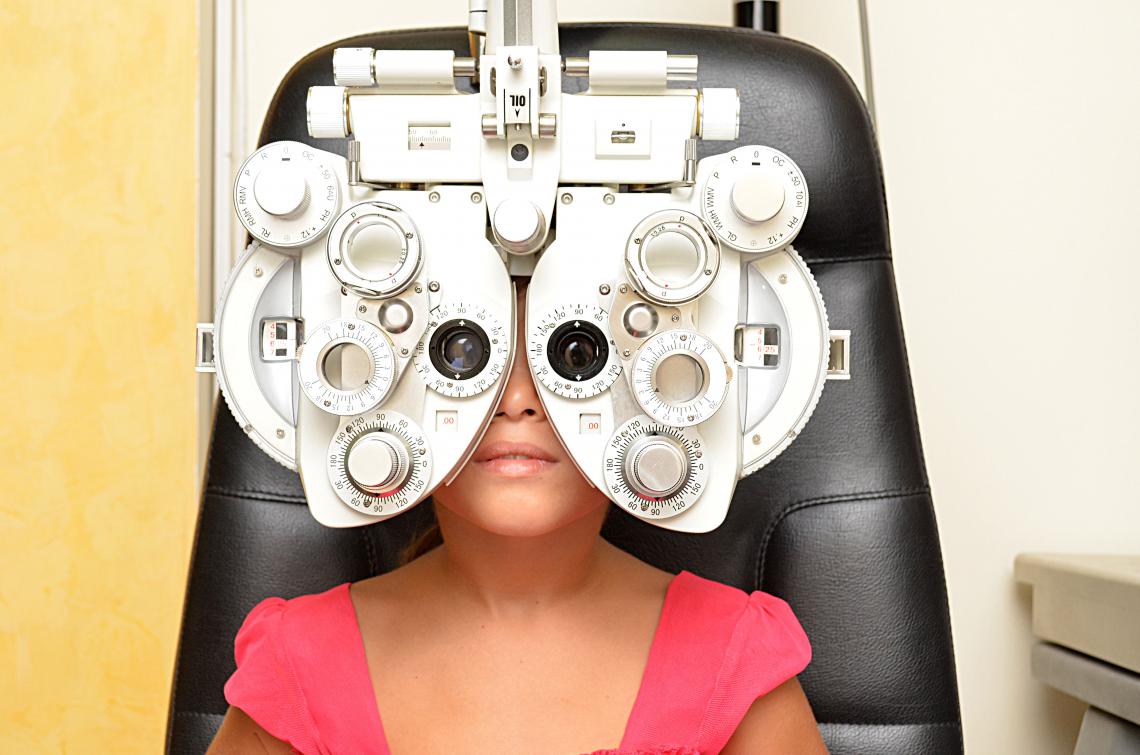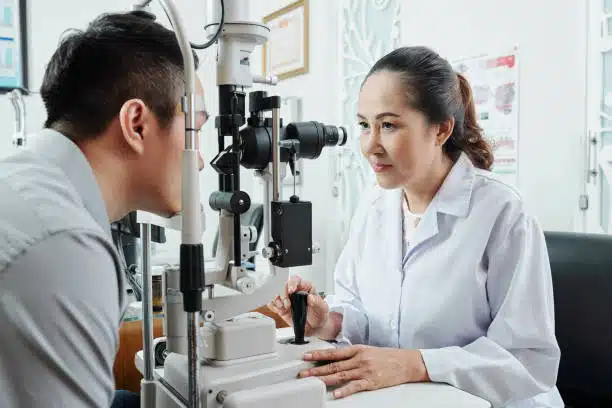Discover a Trusted Optometrist Chino for Household Eye Care Solutions
Discover a Trusted Optometrist Chino for Household Eye Care Solutions
Blog Article
Checking Out the Most Recent Technical Advancements in Optometry and What They Mean for Optometrists
From the precision of Optical Comprehensibility Tomography to the nuanced insights provided by AI-driven diagnostic devices, these advancements are establishing new requirements in patient evaluation and therapy. As these advancements permeate the method, eye doctors are faced with the challenge of accepting these devices to boost patient results.
Developments in Diagnostic Devices
Progressing the area of optometry, innovations in diagnostic tools have actually transformed the method eye care experts examine and identify eye problems and aesthetic problems. The previous decade has actually observed substantial technical improvements, allowing even more extensive and precise examinations. Optical Coherence Tomography (OCT), for instance, supplies high-resolution cross-sectional pictures of the retina, permitting the early discovery of conditions such as glaucoma and age-related macular degeneration. This non-invasive imaging method has become vital in modern optometric method.
Another secret innovation is the intro of innovative corneal topography systems, which map the surface curvature of the cornea with accuracy. These devices are particularly valuable for fitting get in touch with lenses and detecting corneal disorders. Moreover, electronic retinal imaging has actually transformed standard ophthalmoscopy, supplying comprehensive, scenic sights of the retina that facilitate extensive aesthetic examinations.
The advancement of wavefront aberrometry has actually likewise been critical, enabling the analysis of refractive mistakes with unmatched accuracy (Eye Doctor). This innovation helps in personalizing restorative lenses and improving medical results for refractive surgical procedures. Jointly, these analysis innovations encourage eye doctors to supply premium person care, making certain very early treatment and tailored treatment strategies, ultimately boosting aesthetic health and wellness results
AI in Individual Administration
Building on the structure of sophisticated analysis tools, the incorporation of artificial knowledge (AI) in individual administration represents a transformative jump for optometry. AI systems are progressively employed to boost performance, accuracy, and personalization in person treatment. By evaluating vast quantities of data, AI can identify patterns and forecast possible ocular conditions, enabling optometrists to tailor interventions better. This ability is important in managing persistent eye illness such as glaucoma and diabetic person retinopathy, where early discovery and constant surveillance are key.
Moreover, AI-driven systems facilitate streamlined individual interactions and administrative procedures. Automated scheduling, online appointments, and personalized follow-up plans not just boost client satisfaction however additionally maximize time management for professionals. These systems can triage patients based on the seriousness of their problems, guaranteeing that those in essential need obtain prompt interest.
In addition, AI enhances decision-making by offering optometrists with evidence-based suggestions and treatment pathways. By integrating information from electronic health records, AI devices supply insights that inform medical decisions, minimizing the threat of mistakes and boosting patient outcomes. As AI remains to progress, its function in individual monitoring will likely increase, improving the landscape of optometric treatment.
Advances in Retinal Imaging
In the realm of optometry, retinal imaging has actually observed remarkable technological improvements that are enhancing analysis capacities and person treatment. Technologies such as Optical Comprehensibility Tomography (OCT) and fundus digital photography have actually changed just how eye doctors picture and examine the retina. OCT, particularly, offers high-resolution, cross-sectional pictures of the retina, permitting the detailed exam of its layers. This ability is vital for very early discovery and management of conditions like glaucoma, diabetic person retinopathy, and age-related macular deterioration.
Improved imaging methods like OCT angiography are additional refining diagnostic precision. This non-invasive technique maps blood circulation in the retina, offering essential insights right into vascular health and wellness without the demand for dye shots. Furthermore, flexible optics innovation is being incorporated into retinal why not look here imaging systems to remedy ocular aberrations, providing unprecedented photo clarity. Such improvements help with the recognition of min retinal changes that can signify illness development.
Furthermore, innovations go to the website in expert system are increasing retinal imaging by making it possible for automated analysis of big datasets. These systems aid eye doctors in identifying patterns a sign of pathology, consequently boosting diagnostic accuracy and efficiency. Jointly, these developments are changing retinal imaging right into a keystone of modern-day eye treatment, boosting outcomes and expanding therapeutic possibilities.
Teleoptometry's Growing Role
Teleoptometry is progressively ending up being an essential part of eye treatment, driven by improvements in electronic interaction and analysis devices. As optometry welcomes electronic improvement, teleoptometry assists in remote examinations, permitting eye doctors to extend their services beyond typical limits. This is especially helpful in underserved and rural areas where accessibility to specialized eye treatment is commonly restricted. By leveraging high-resolution video conferencing and progressed retinal imaging, eye doctors can carry out extensive eye exams from afar, making certain prompt diagnosis and treatment.
The combination of synthetic knowledge (AI) further boosts teleoptometry, enabling the evaluation of visual information and helping in the discovery of ocular problems such as glaucoma and diabetic retinopathy. AI-powered formulas can rapidly analyze complex imaging information, offering eye doctors with valuable understandings that bolster scientific decision-making.
Furthermore, teleoptometry sustains continuity of treatment via seamless assimilation with electronic health and wellness documents (EHRs), allowing eye doctors to preserve detailed client backgrounds. This guarantees that individuals receive constant and tailored treatment even when seeking advice from various practitioners.
In spite of these benefits, obstacles continue to be, including guaranteeing data protection and taking care of patient expectations. Teleoptometry stands for a significant stride towards more available, effective, and patient-centered eye care. As innovation advances, its duty is positioned to increase better.

Future Fads in Eye Treatment
A myriad of cutting-edge fads is readied to improve the future of eye treatment, driven by technological developments and the developing requirements of clients. One significant trend is the assimilation of man-made intelligence (AI) in diagnostics, which promises to boost the accuracy and effectiveness of eye evaluations. AI algorithms can assess substantial quantities of data from retinal images, possibly finding conditions like diabetic retinopathy visit this web-site and glaucoma earlier than typical approaches.
Additionally, individualized medicine is gaining grip in optometry, with hereditary testing notifying customized therapy strategies. This technique aims to optimize patient outcomes by customizing interventions to private genetic profiles. Wearable modern technology, such as clever call lenses, is likewise on the horizon, providing real-time surveillance of intraocular stress or sugar levels, hence supplying continuous understandings into systemic and eye health and wellness.
The adoption of enhanced fact (AR) and online fact (VR) in training and person education is an additional emerging pattern. These technologies supply immersive experiences that can improve understanding and skills both for eye doctors and patients. As these fads develop, eye doctors should remain abreast of technological innovations to provide sophisticated care, making sure better patient results and complete satisfaction in the vibrant landscape of eye treatment.
Conclusion

Jointly, these diagnostic developments empower eye doctors to provide exceptional patient treatment, making sure early treatment and tailored treatment approaches, inevitably improving aesthetic health and wellness outcomes.

As these modern technologies continue to develop, eye doctors have to adapt and integrate them right into practice, eventually optimizing process performance and raising the standard of eye care provided to people.
Report this page